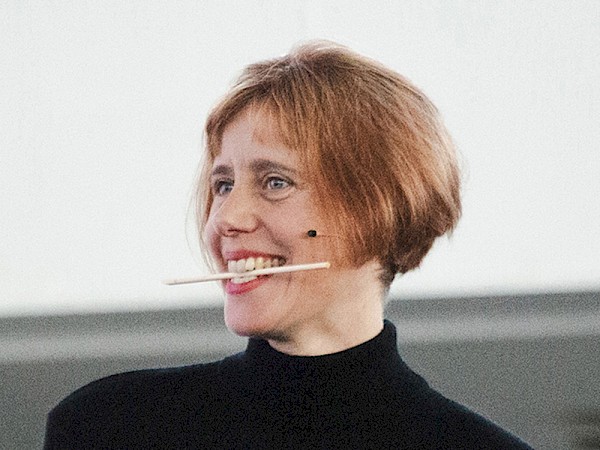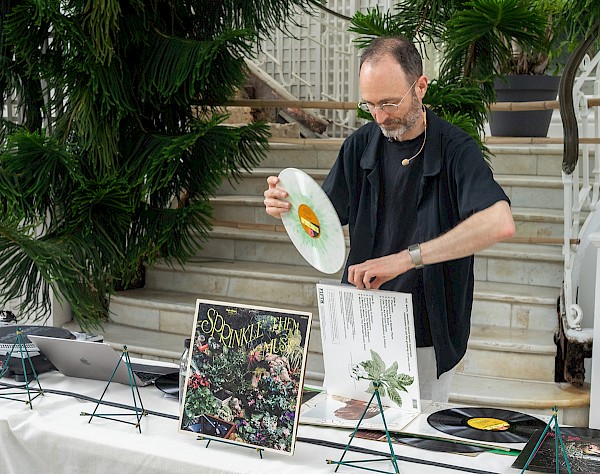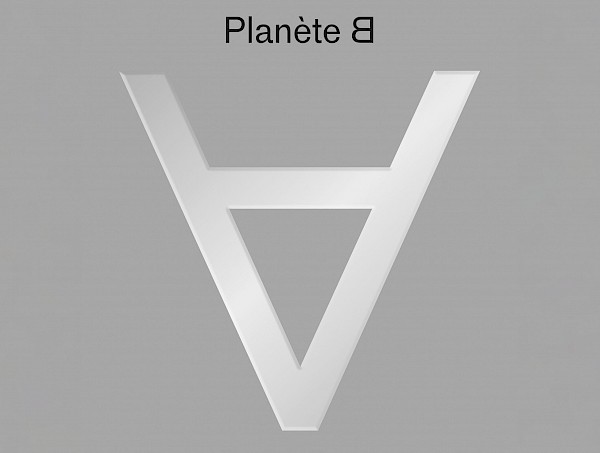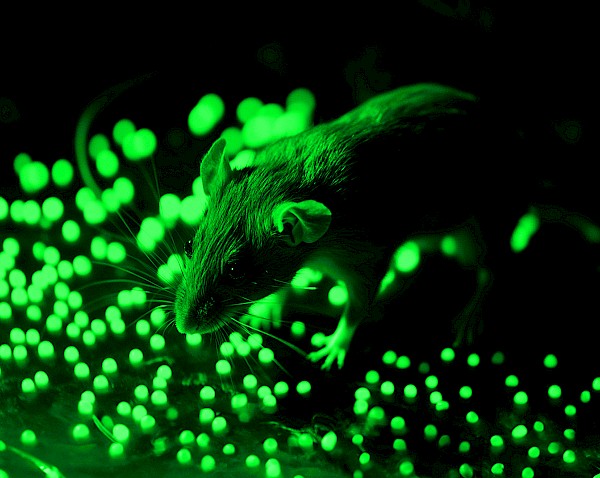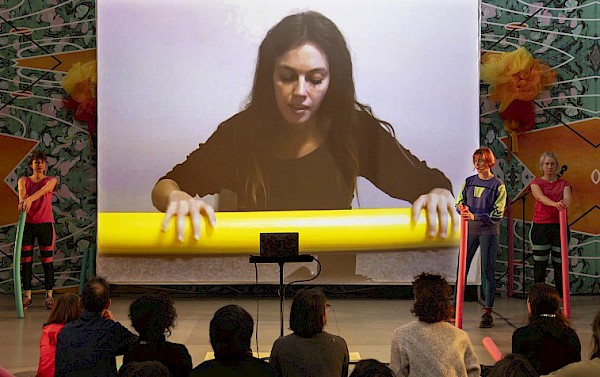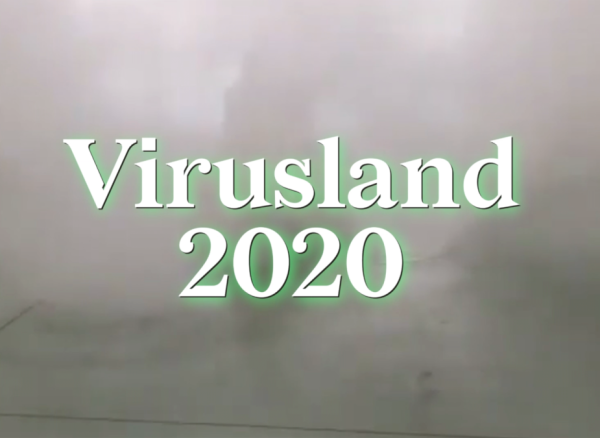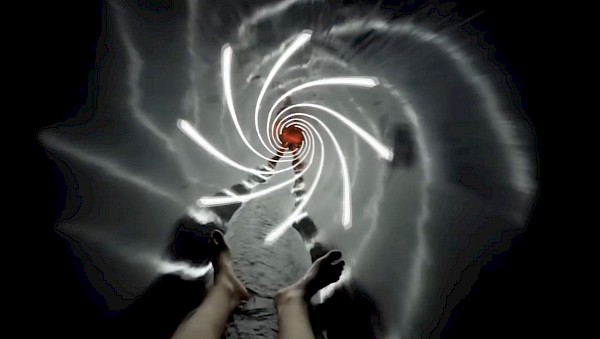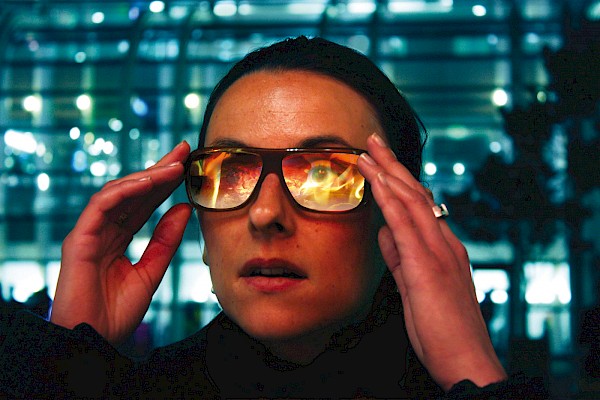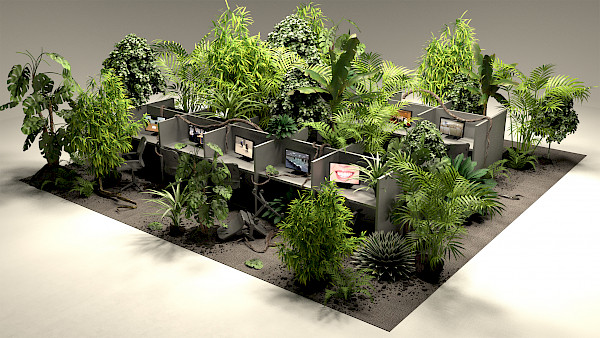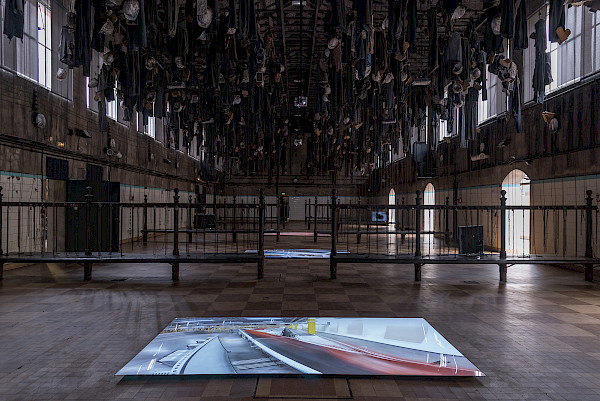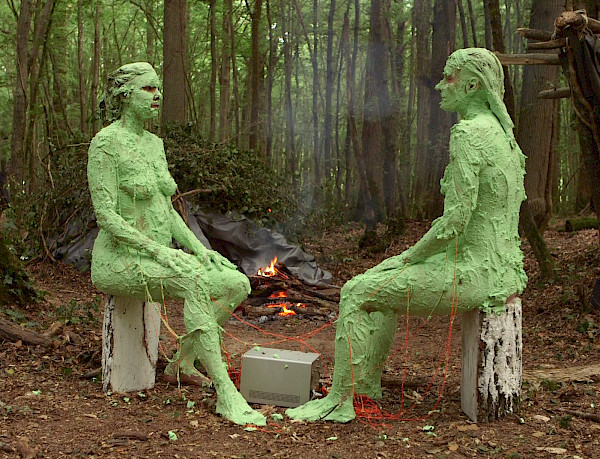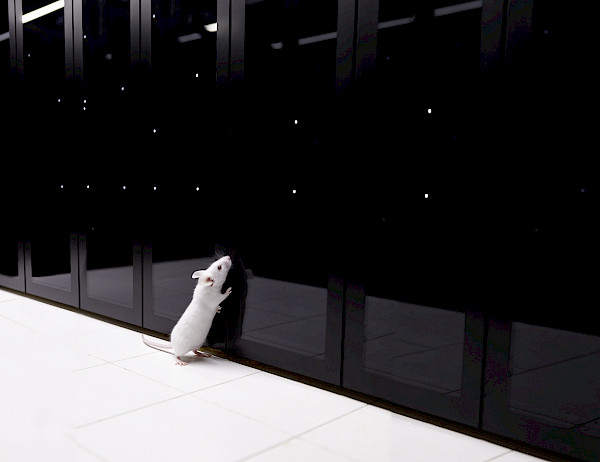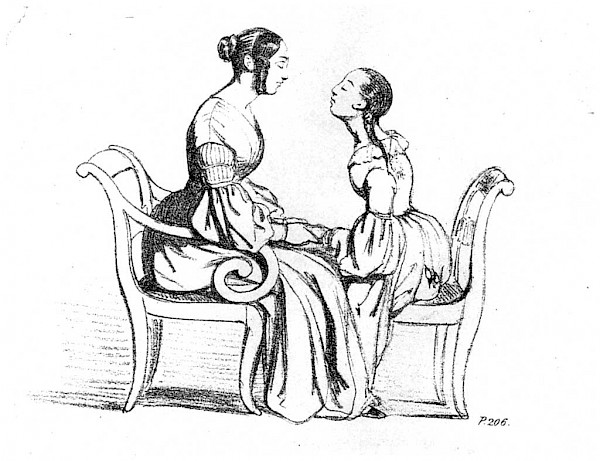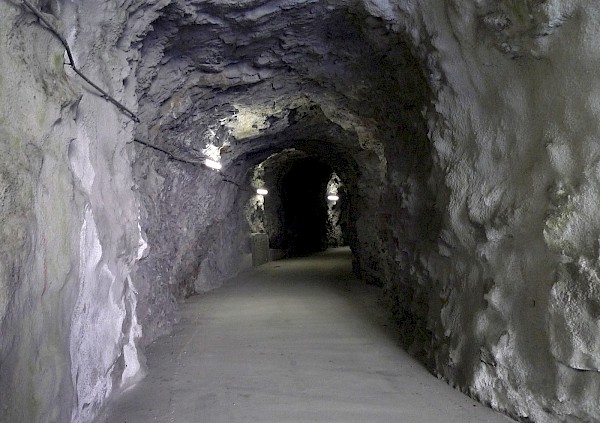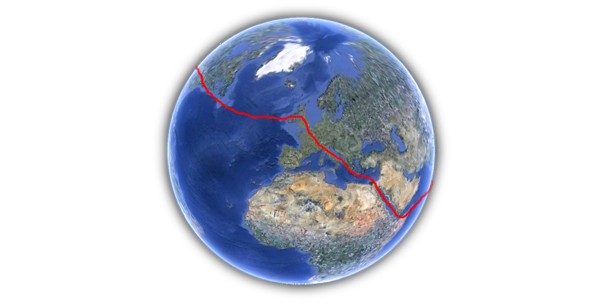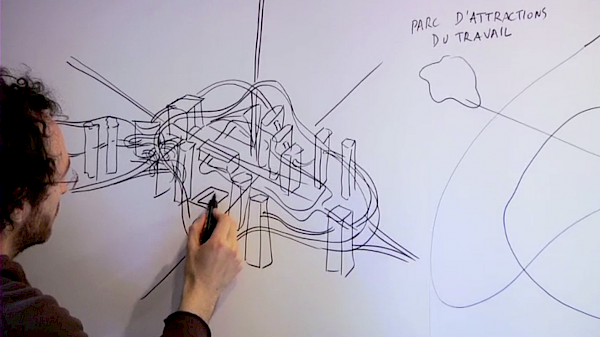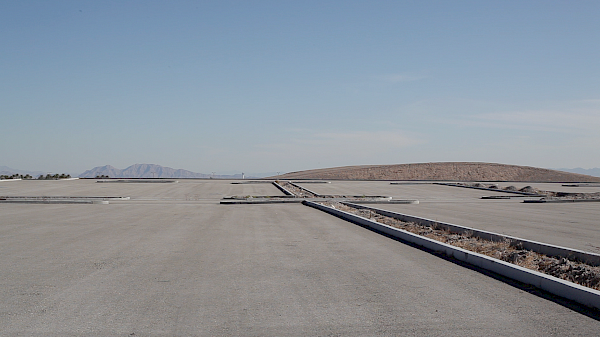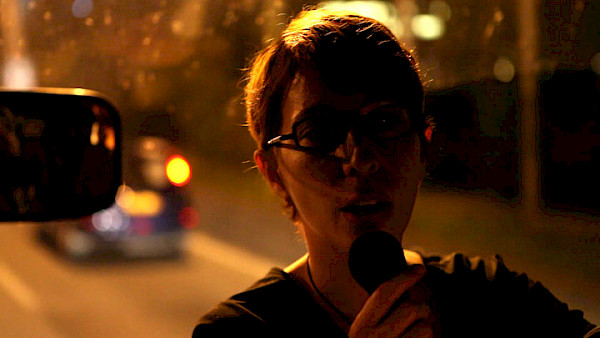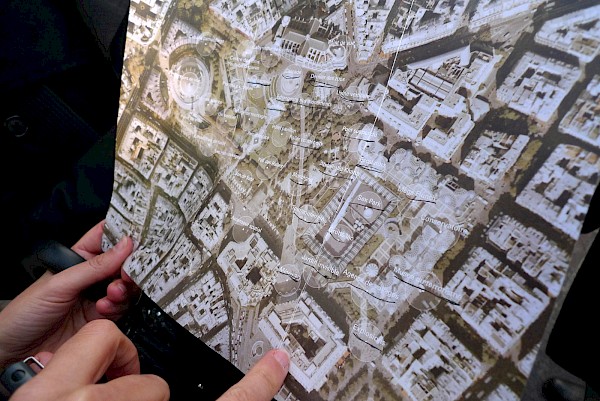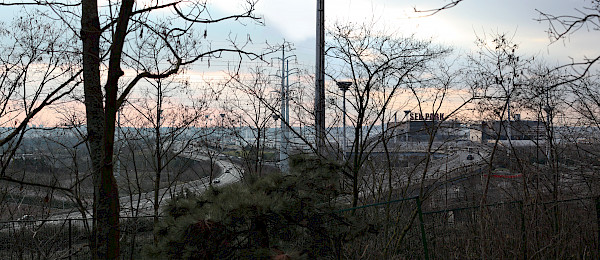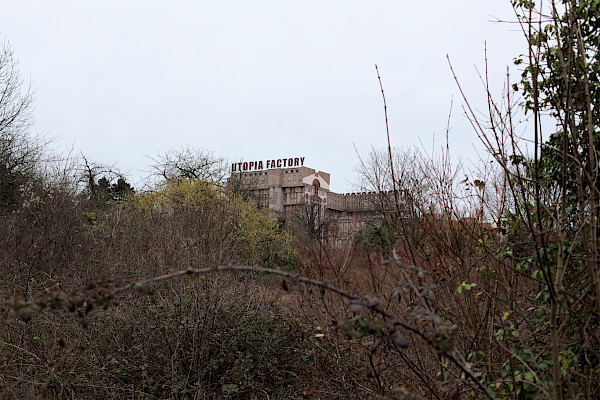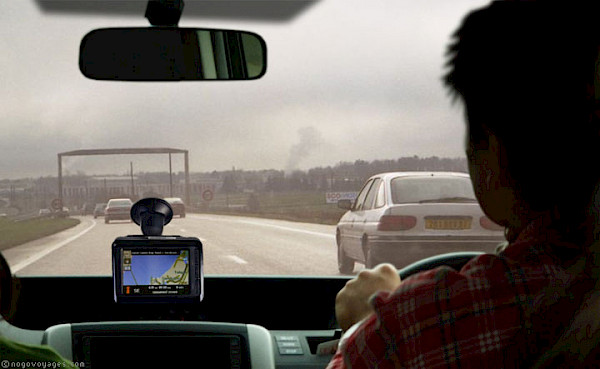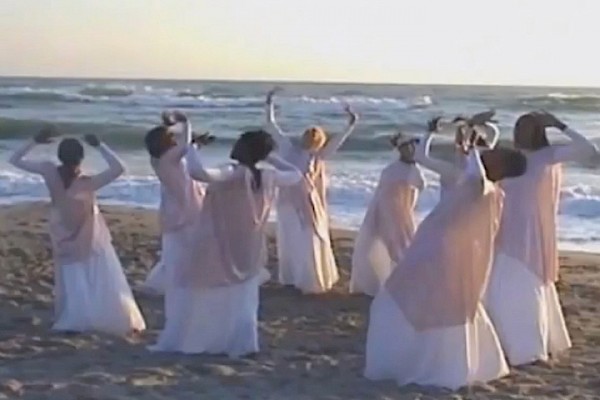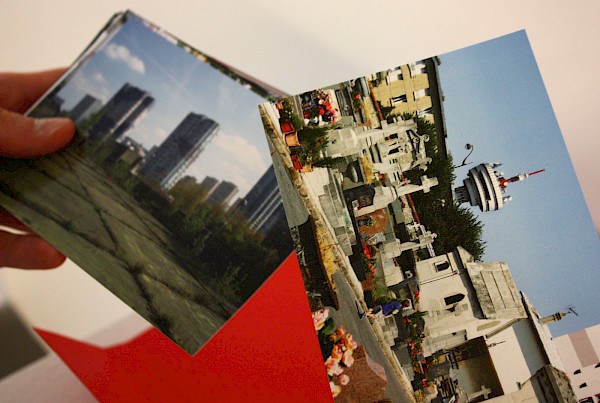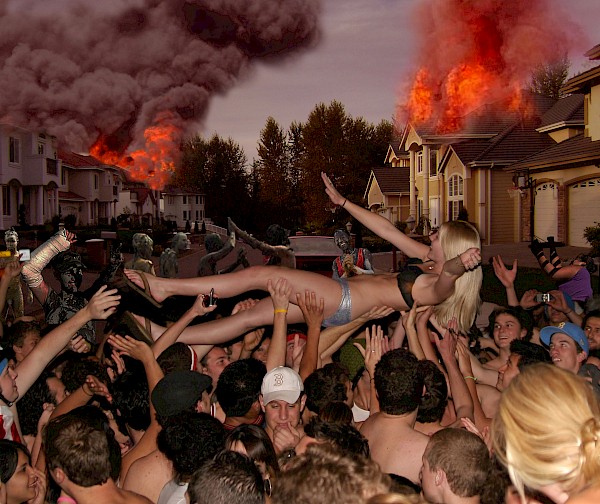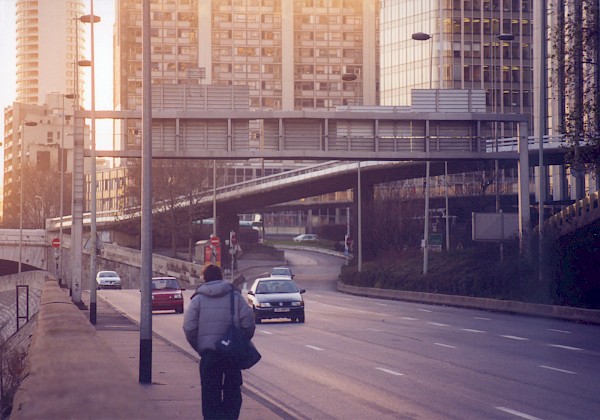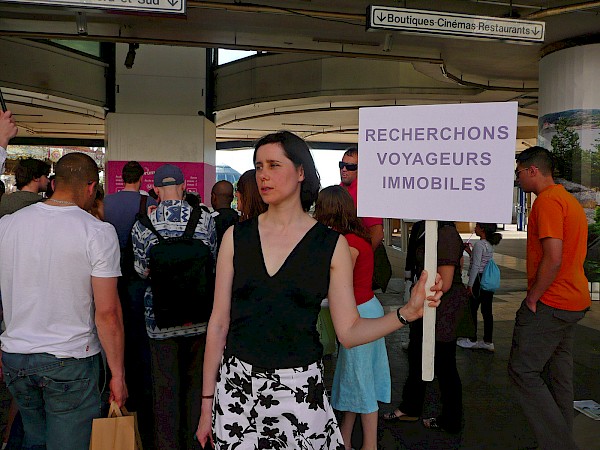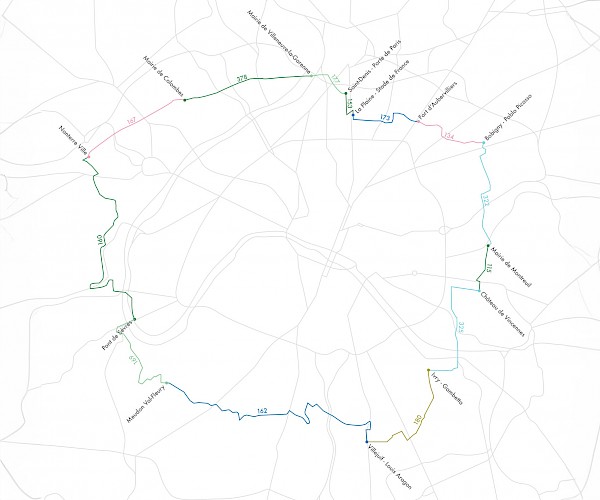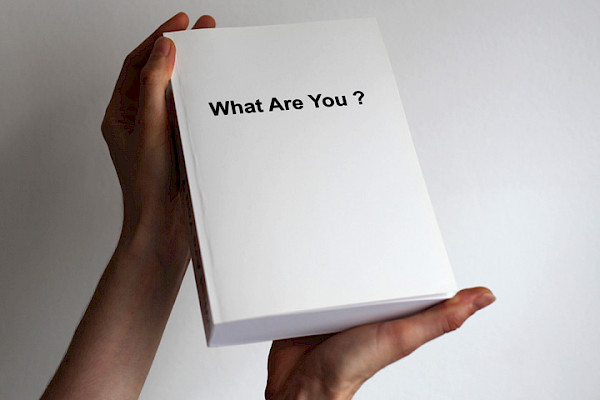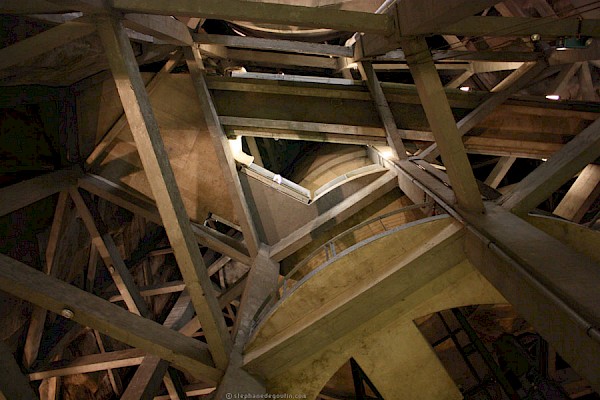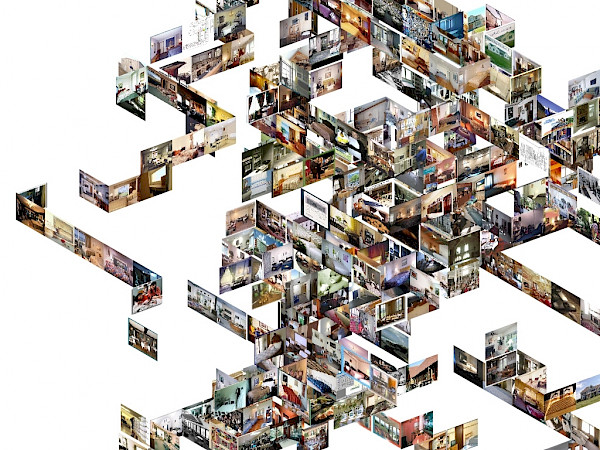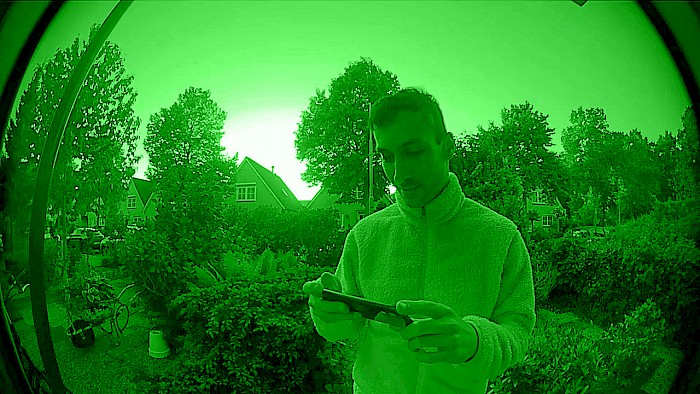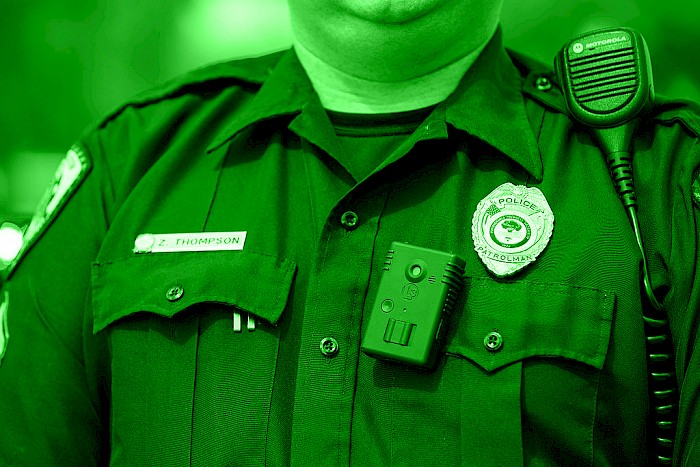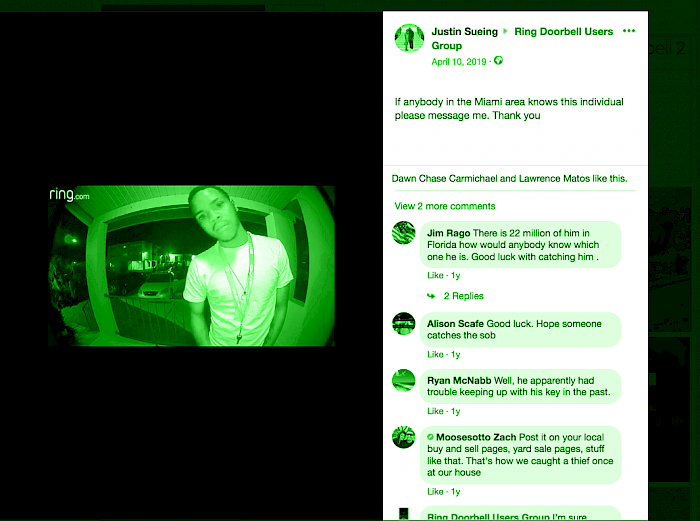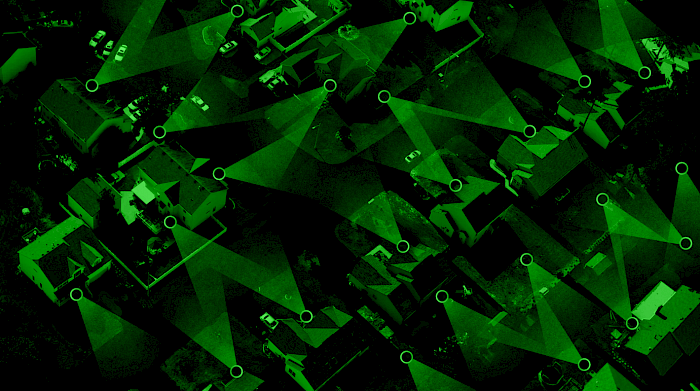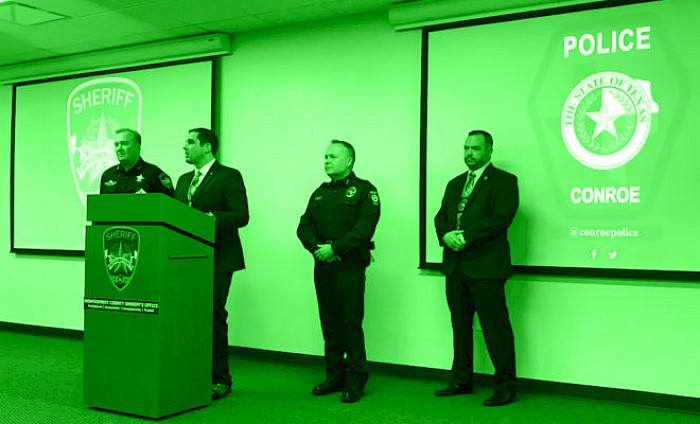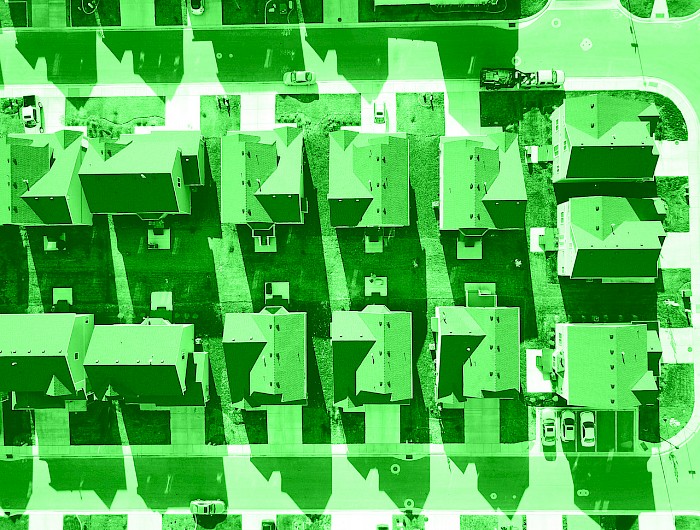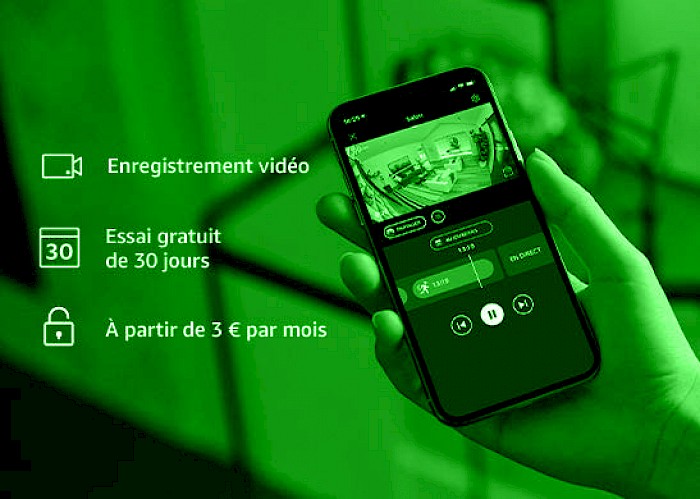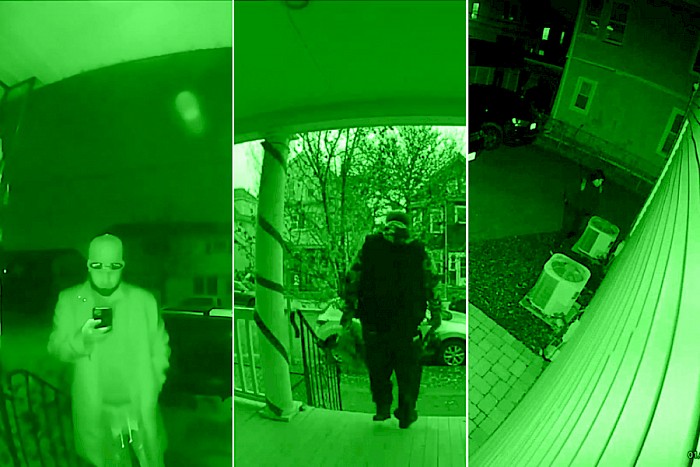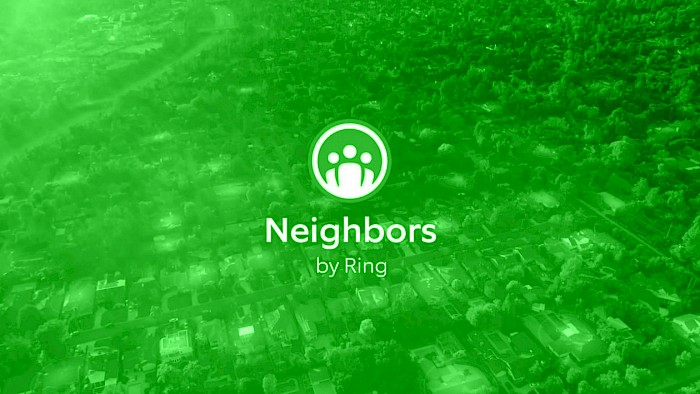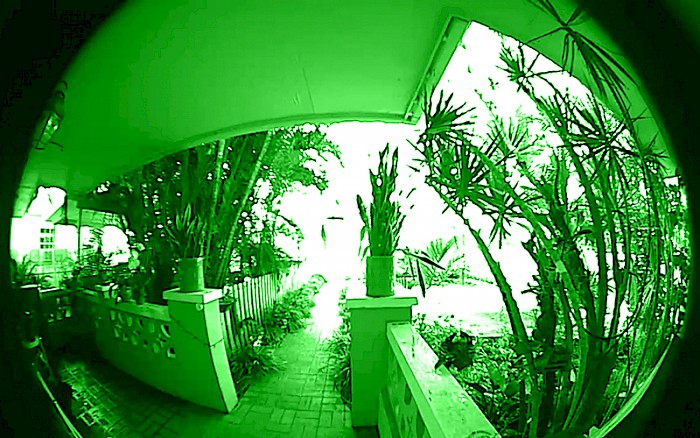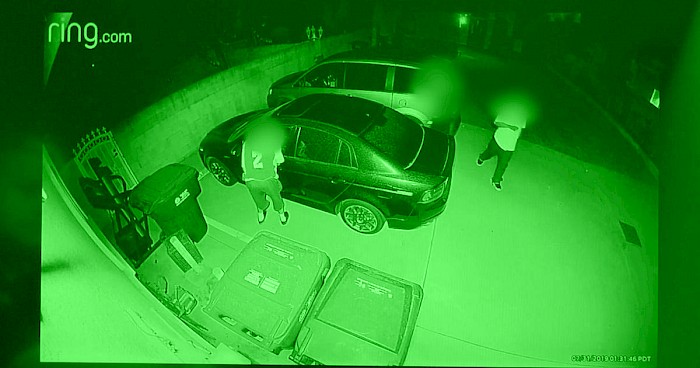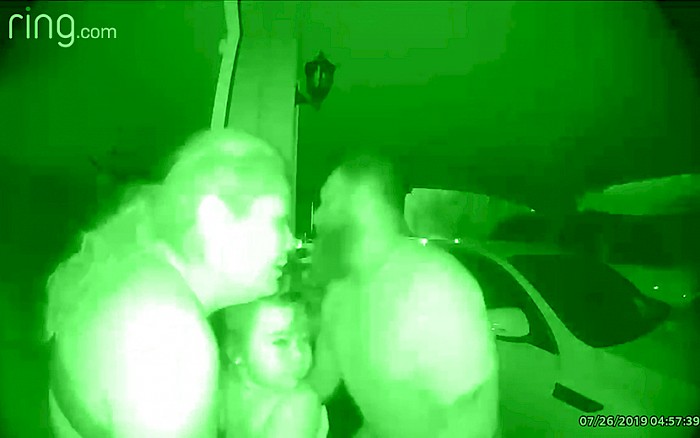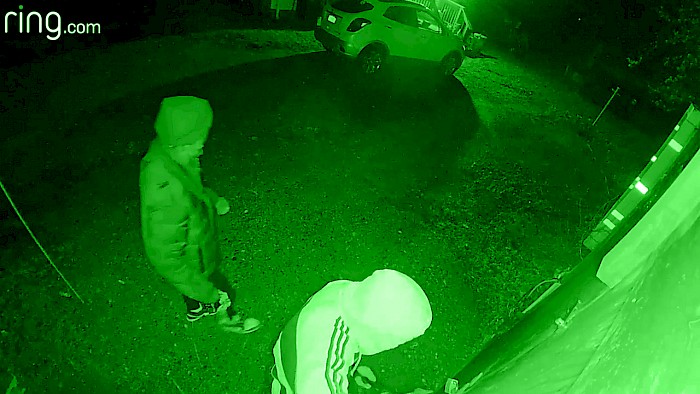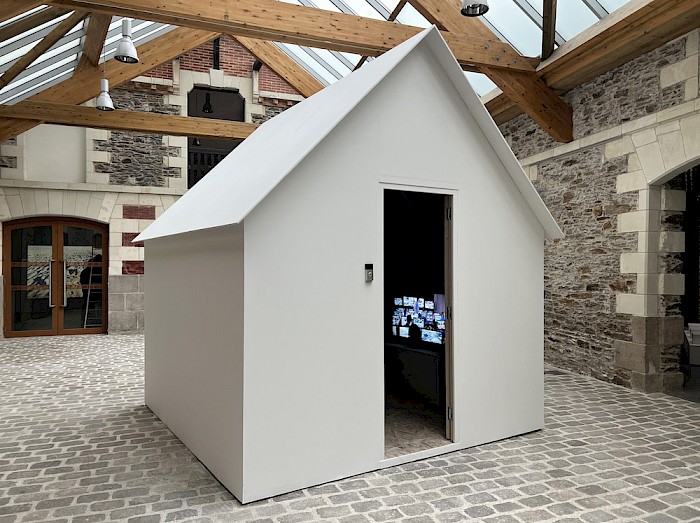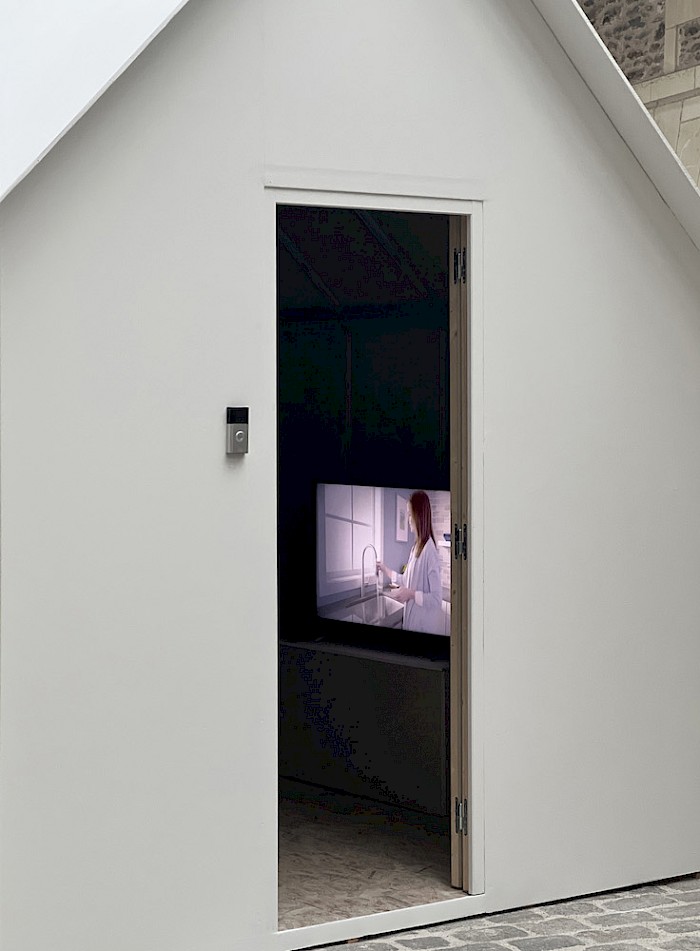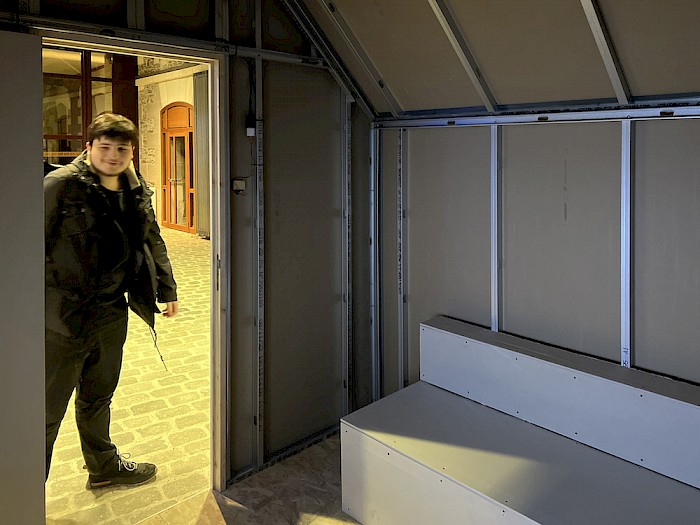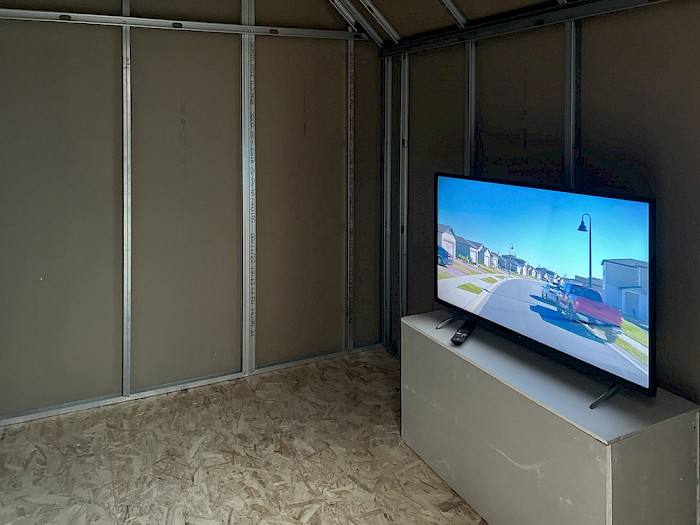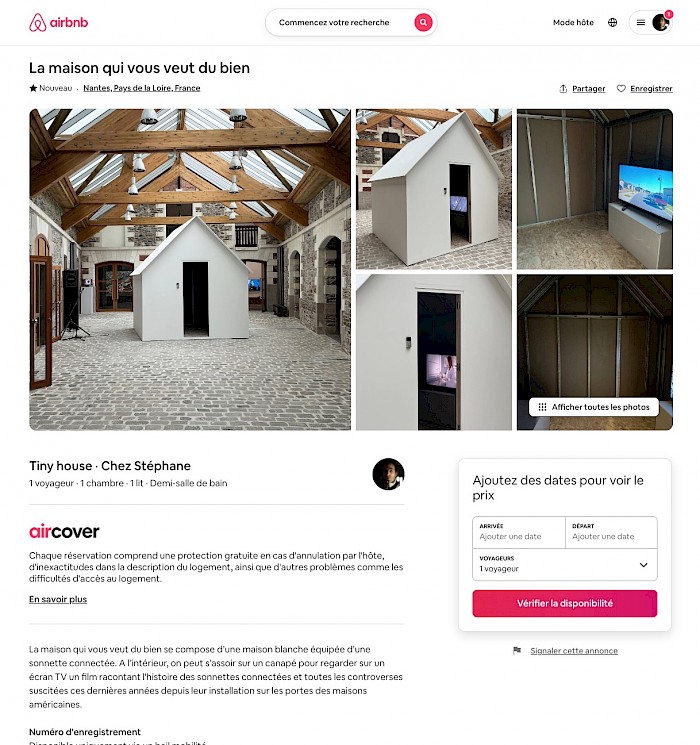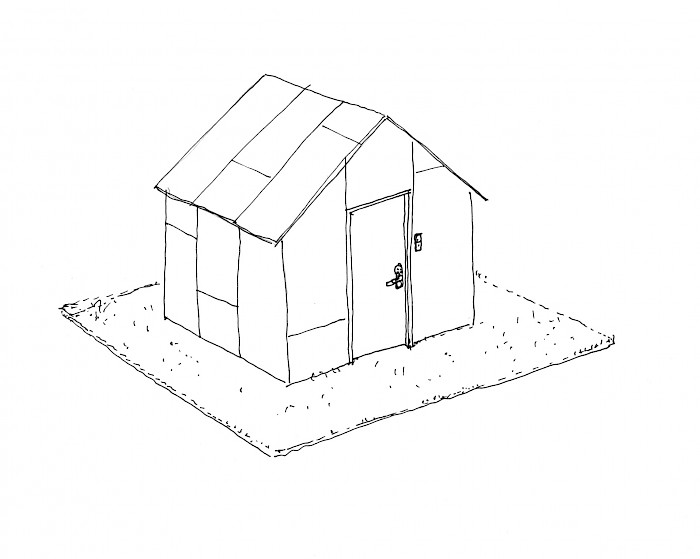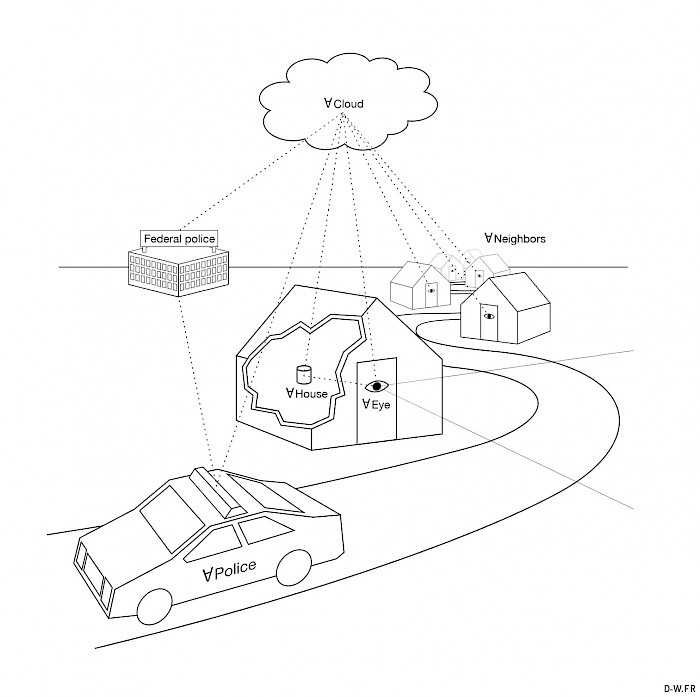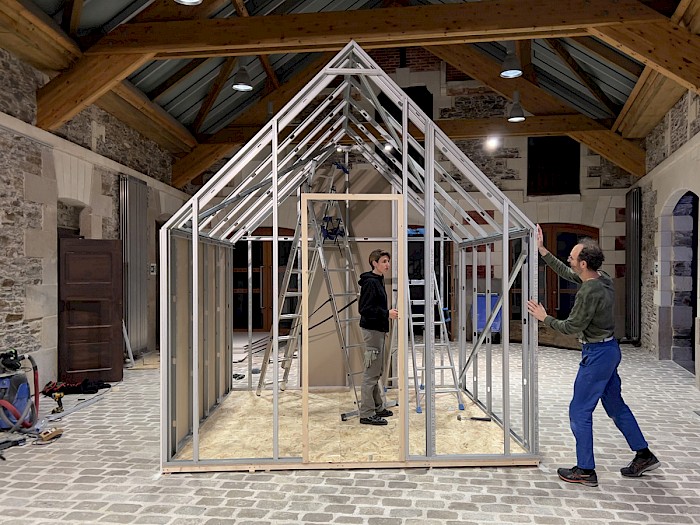"In The House That Wishes You Well, we discover a very American system: the connected doorbell. Fitted with a camera, it lets you know who's ringing the doorbell, so you can use an alert system to dissuade potential intruders. Everything is under control (or almost...). The two artists borrow a rhetorical and aesthetic power from online stocks of images, advertisements and web flows, bordering on a kind of cloud poetry. In fact, it's in purple clouds that police officers express their interest in this surveillance system that gluttonously consumes private data. Beneath its falsely ingenuous exterior, this film succeeds in unzipping our critical faculties and boosting our digital immunity.", Benoît Hické for Tënk
The House That Wishes You Well
Installation, film, house, doorbell
The House That Wishes You Well is about a seemingly ordinary object: a smart doorbell called “Ring,” sold by Amazon, to be installed at the entrance of your home. Connected to an electronic lock, it allows you to remotely open your door—to receive deliveries, for example. Ring is equipped with a camera that continuously records everything happening in front of it. You can watch the footage on your smartphone, no matter where you are.
From this seemingly harmless object unfolds an entire system of surveillance and control.
Connected to the internet, these countless cameras become detectors, informants, witnesses offering improbable points of view. The unauthorized capture of the neighborhood, organized neighbor-to-neighbor spying, and access to footage by local police forces turn the great dream of the automated home into a paranoid nightmare. The slightest captured detail—a butterfly’s flight, a lost dog, the shadow of a passerby—becomes suspicious, haunting the occupants of the little white house.
Software designed to detect behavior, or neural networks trained to recognize faces (possibly assisted by click workers paid to stalk your ex), capture, annotate, data-mine, and transform massive amounts of footage. Through biometric detection aided by deep learning, they filter gestures according to lists of suspicious behaviors and forward their results to law enforcement or intelligence agencies.
This doorbell functions as a Trojan horse. The promise of safety and a “caring” home allows Amazon to enter your house—quite literally.
What emerges is a peer-to-peer network of private surveillance. Voyeurism enters its deep phase. Amazon is stealthily inserting itself into the field of domestic security in the United States, taking advantage of a disturbing position of control—from within people’s homes.
This film extends a line of thinking initiated in Gwenola Wagon’s book Planet B (Éditions 369). It traces the biography of a man called “B,” who runs a company called “A”—never mentioned by name but easy to identify.
Film
The film is made entirely from existing materials, including videos uploaded by users, but especially those produced by the manufacturers themselves: demonstrations, advertisements. It is a montage film—the mere reordering of these everyday images reveals the meaning of the technologies.
For copyright reasons, some shots were recreated using artificial intelligence, particularly those involving police officers. These are real materials, reconstructed. It is clear that the images are modified, while still indicating that the underlying footage is based on reality.
The soundtrack consists entirely of variations on the theme of doorbells: various high-pitched instruments, bells, piano tuner tones, and of course, the sounds of smart doorbells.
Installation
Designed for the exhibition "Shelter", the installation consists of a white house surrounded by a green lawn. The door is locked with an electronic lock and monitored by an Amazon Ring connected doorbell which films the outside. The door opens, under the condition of a code disclosed at the entrance of the exhibition, and then closes immediately. Inside, you can sit on a sofa to watch on a TV screen a montage of videos captured by the connected doorbells installed on the doors of American homes.
Diffusion
Diffusion sur la plateforme Tënk, du 28 février au 25 juin 2025
Festival Les rencontres du réel #13, screening #6 RR#13, cinéma Lux Louis Delluc du Buisson de Cadouin, program L'oeil lucide, November 9, 2025.
Festival La Vivalita! #3, Pol-n, 11 rue des Olivettes, Nantes. september 27, 2025.
Nomades screenings, Ty Films association and La machine dans le jardin festival organized by the Prospect Station association around technical imaginaries. July 26, 2025
Médiatheque de Pordic screenings, Pordic, April 2025
"Ragpickers' Investigations into the Internet", Soundimageculture, Brussels, september 27, 2024.
Rencontres internationales Paris/Berlin Haus der Kulturen der Welt, Berlin, April 2024.
Festival des éditions sauvages, La patate sauvage, Aubervilliers, 9 décembre 2023
Cinéma Nova, Bruxelles, november 25, 2023
Rencontres internationales Paris/Berlin. Selected for thz Moving Image Art Prize. Screening at the Maison européenne de la photographie on november 1st, 2023.
Exposition Shelter / Zoo Galerie, Nantes, december 1 to december 23, 2022.
"Deep Stock" exhibition, galerie Art et Essai, Rennes, 2021
Credits
Texts, editing and post-production : Stéphane Degoutin and Gwenola Wagon Musics Méryll Ampe and Gwenola Wagon Sound editing Jeanne Delplancq
Construction of the house : Stéphane Degoutin, Arnaud Moinet, Camille Riou, WithSimon Bousquet
Thanks to : Hervé Cocqueret, Lilla Gauthier, Patrice Joly, Mya Finbow, Philippe Szechter

